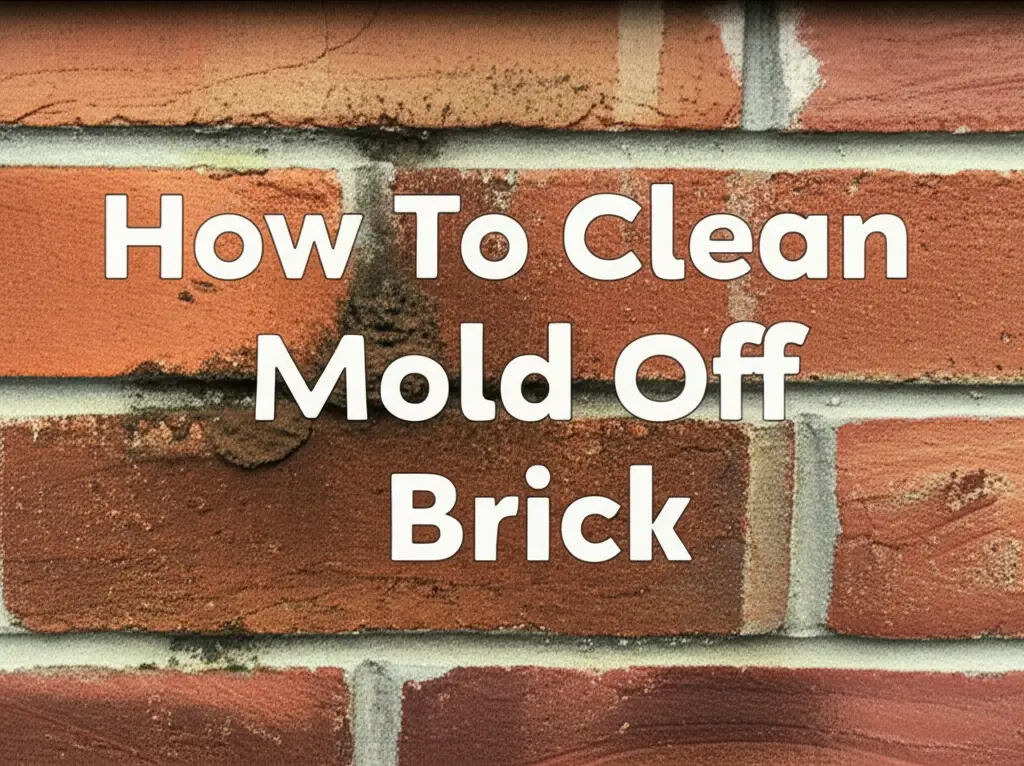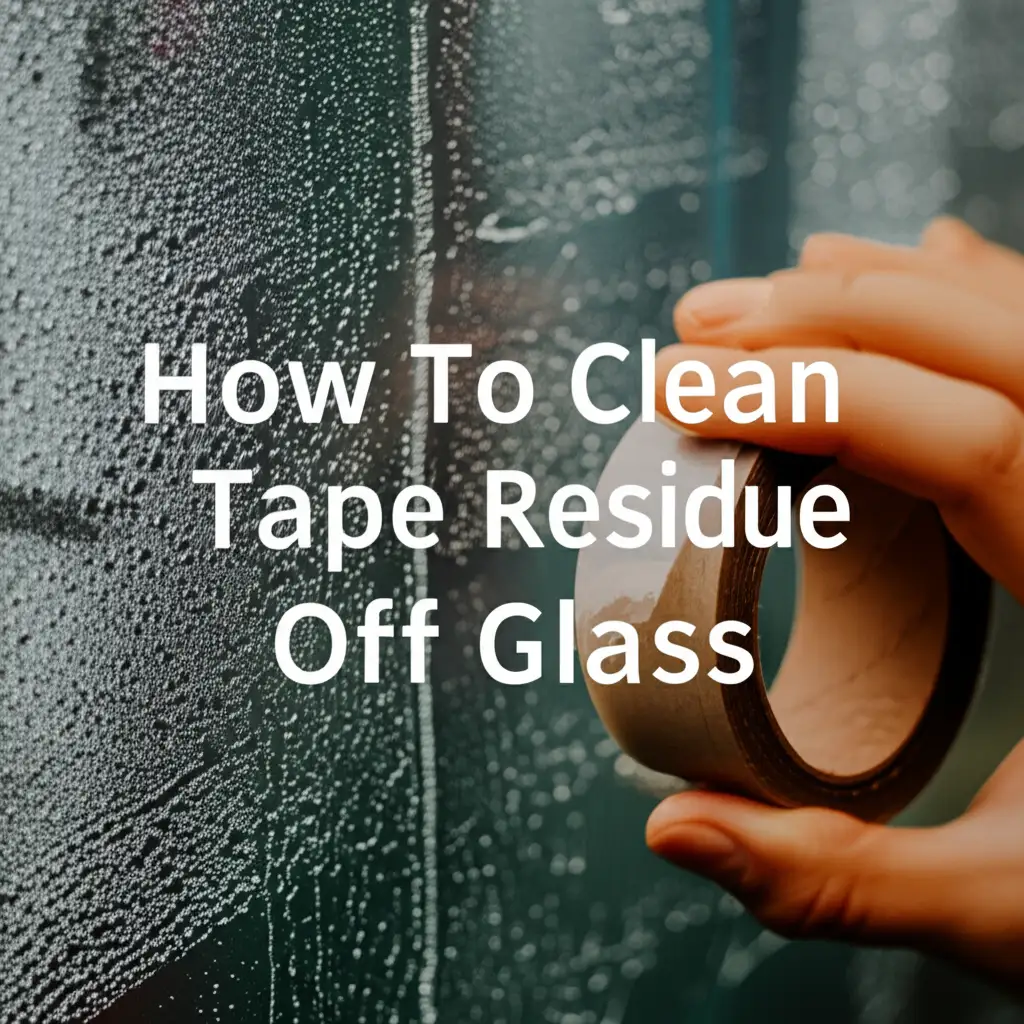· Home Cleaning · 16 min read
How To Clean Efflorescence Off Brick

How To Clean Efflorescence Off Brick Effectively
Have you noticed unsightly white, powdery stains appearing on your beautiful brickwork? These chalky deposits are likely efflorescence, a common issue for many homeowners. Efflorescence can make your brick surfaces look old and neglected. It often appears on walls, patios, chimneys, and even indoor fireplaces.
Cleaning efflorescence off brick is important for maintaining your home’s appearance. It also helps preserve the integrity of your masonry. This guide will walk you through effective steps to remove these mineral deposits. We will cover everything from gentle methods to stronger solutions. You will learn how to tackle efflorescence and keep your brick looking its best.
Takeaway
- Identify efflorescence as white, powdery mineral deposits.
- Start cleaning with dry brushing and plain water for fresh stains.
- Use vinegar or mild acid solutions for more stubborn efflorescence.
- Consider muriatic acid as a last resort, always with extreme caution and proper safety gear.
- Implement preventive measures like sealing and moisture control to avoid recurrence.
What is the best way to clean efflorescence off brick?
The best way to clean efflorescence off brick involves starting with dry brushing, then moving to a simple water rinse. If stains persist, use a solution of white vinegar and water, or a specialized efflorescence cleaner. For very stubborn deposits, a highly diluted muriatic acid solution can be applied carefully. Always prevent future occurrences by managing moisture.
Understanding Efflorescence: What Is It?
Efflorescence appears as a white, powdery, or crystalline substance on brick surfaces. It happens when water moves through masonry, dissolving salts within the brick or mortar. As the water evaporates from the surface, it leaves these salt deposits behind. This process creates the visible white stains we see.
The salts are naturally present in many building materials. Water is the main trigger for efflorescence. This includes rain, groundwater, condensation, or leaks. When bricks get wet, the salts dissolve. Then, as the brick dries, the salts are pulled to the surface. They crystallize there, forming the white residue.
You might notice efflorescence more after a period of heavy rain. It also appears when temperatures change quickly. This indicates that moisture is present within your brick structure. While it mostly affects appearance, long-term efflorescence can sometimes point to deeper moisture issues. These issues could potentially compromise your masonry over time.
Recognizing efflorescence is the first step toward effective removal. It is distinct from mold or mildew. Mold often appears green, black, or slimy. Efflorescence is always white and powdery. Understanding its cause helps in choosing the right cleaning method. It also helps in preventing it from coming back.
Preparation Is Key: Tools and Safety Gear
Before you start any cleaning project, proper preparation is essential. This includes gathering the right tools and, more importantly, ensuring your safety. Efflorescence cleaning can involve strong chemicals, so protection is not optional. You want to make sure you have everything ready before you begin. This helps the cleaning process go smoothly and safely.
Essential Tools for Cleaning
- Stiff-bristle brush: A non-metallic brush is best for dry brushing and scrubbing. Metal brushes can damage the brick surface.
- Bucket(s): You will need these for mixing cleaning solutions and for rinsing.
- Garden hose or pressure washer: A hose with a nozzle is sufficient for most cases. A pressure washer can speed up rinsing but use it carefully on low pressure. High pressure can damage mortar.
- Spray bottle: Useful for applying mild cleaning solutions evenly.
- Drop cloths or plastic sheeting: Protect nearby plants, landscaping, or non-brick surfaces from overspray.
- Sponge or soft cloths: For wiping down smaller areas or for controlled application of solutions.
Crucial Safety Gear
Safety must always come first, especially when working with cleaning chemicals.
- Safety glasses or goggles: Protect your eyes from splashes and debris. This is non-negotiable.
- Chemical-resistant gloves: Choose gloves made of nitrile or similar material. These protect your hands from harsh solutions.
- Long-sleeved shirt and pants: Cover your skin to prevent contact with cleaning agents.
- Respirator or mask: If using strong acids or working in a poorly ventilated area, a mask is vital. It protects your lungs from fumes.
- Old shoes or boots: Wear footwear that you do not mind getting dirty or potentially damaged by chemicals.
Having all these items ready saves time. It also protects you and your property. Taking a few minutes to prepare ensures a safer and more effective cleaning job. Remember, some solutions can be very corrosive. Always read product labels for specific safety instructions.
Initial Steps: Dry Brushing and Water Rinse
When you first notice efflorescence, do not reach for harsh chemicals immediately. Often, the simplest methods are the most effective. Starting with dry brushing and a plain water rinse is a gentle approach. It can remove fresh or light efflorescence without damaging your brickwork. This is always the first technique I recommend trying.
Step 1: Dry Brushing the Surface
Begin by using a stiff-bristle brush. Make sure it is not a wire brush, as metal bristles can scratch the brick or leave behind metal particles that rust. Vigorously brush the affected areas. Your goal is to loosen and remove as much of the powdery white residue as possible. Brush downwards to prevent dislodged salts from settling into lower sections of the brick.
This dry brushing step is crucial. It removes the superficial layers of salt before you introduce any water. If you apply water first, you might re-dissolve the salts. This could allow them to soak back into the brick. Then they would simply re-crystallize on the surface once the brick dries again. Dry brushing helps to physically remove the problem before it can spread or reform.
Step 2: Rinsing with Clean Water
After thoroughly dry brushing, use a garden hose to rinse the brick surface with clean water. Apply water from the top down. Use moderate pressure, but avoid high-pressure washing that could damage the mortar joints. The goal here is to wash away any remaining dust or loose salt particles. You also want to remove any small amounts of dissolved salts.
Make sure to rinse the entire affected area evenly. This prevents water from pooling and redepositing salts. Allow the brick to dry completely after rinsing. Observe the surface as it dries. If the efflorescence was minor, these two steps might be enough. The brick should look clean and free of white residue. If the stains reappear once the brick dries, then you need to move on to stronger cleaning solutions.
These initial steps are effective for new or light efflorescence. They are also the least invasive methods. Always start here before escalating to chemical treatments. You might be surprised by how much improvement you see with just a brush and water.
Tackling Stubborn Stains: Vinegar and Mild Acids
If dry brushing and plain water do not fully remove the efflorescence, it is time for a stronger approach. Mild acid solutions are often effective for more stubborn stains. White vinegar is a common household item that works well as a mild acid. There are also commercial efflorescence removers available. These are typically designed to be safe for masonry.
Using vinegar is a great option because it is relatively safe and readily available. It provides enough acidity to dissolve mineral deposits without being overly harsh. I find it is a good balance between effectiveness and safety for many homeowners. You can often clean tough stains from various surfaces using natural alternatives. For more general cleaning advice, consider resources like how to clean with vinegar and baking soda.
White Vinegar Solution
To prepare a vinegar solution, mix equal parts white vinegar and water. For very tough stains, you can use a stronger vinegar-to-water ratio, up to full-strength vinegar. Always test a small, inconspicuous area first. This checks for any adverse reactions on your specific brick type. Some bricks or mortar may be sensitive to acids.
Apply the vinegar solution using a spray bottle or a sponge. Saturate the efflorescence-affected areas thoroughly. Let the solution sit for 5-10 minutes. This allows the acid to break down the salt deposits. Do not let the solution dry on the brick. Keep the area wet with the solution during this dwell time.
After the dwell time, scrub the brick vigorously with a stiff-bristle brush. You should see the white residue begin to dissolve and lift away. Rinse the area thoroughly with plenty of clean water from a garden hose. Ensure all traces of the vinegar solution are washed away. Allow the brick to dry completely. Re-evaluate if more treatment is needed.
Commercial Efflorescence Removers
Many hardware stores sell specialized efflorescence removers. These products are formulated to dissolve mineral salts. They are often less corrosive than strong acids like muriatic acid. Read the product instructions carefully before use. They typically involve similar application methods: apply, let sit, scrub, and rinse.
Always wear appropriate safety gear when using any cleaning solution. This includes gloves and eye protection. Commercial removers can be very effective. They are a good choice if vinegar does not yield the desired results. They are also a safer alternative before considering much harsher chemicals. Choosing the right cleaner is essential for effective and safe brick maintenance. This includes tasks like cleaning a brick fireplace before painting, which also requires careful preparation. You can find more specific advice on this at how to clean brick fireplace before painting.
When to Use Stronger Solutions: Muriatic Acid (Last Resort)
Sometimes, efflorescence is so deeply embedded or widespread that milder methods fail. In such cases, a stronger chemical solution may be necessary. Muriatic acid, also known as hydrochloric acid, is a powerful acid. It can effectively dissolve stubborn mineral deposits. However, it is also highly corrosive and dangerous. This option should always be a last resort. Always exercise extreme caution when using it.
Understanding Muriatic Acid
Muriatic acid is a very strong chemical. It can cause severe burns to skin and eyes. Its fumes are also toxic and harmful to the respiratory system. It can also damage or etch certain types of brick or mortar. Never use it on glazed, polished, or colored bricks. It should only be used on unsealed, unpainted, natural brick. It is important to know the risks involved before proceeding.
Preparation and Safety for Muriatic Acid
Before even opening the container, wear full personal protective equipment. This includes chemical-resistant gloves, safety goggles or a face shield, long sleeves, long pants, and a respirator mask. Ensure the work area is well-ventilated. Have a source of clean water nearby to flush skin or eyes immediately if contact occurs. Protect surrounding plants and non-brick surfaces with plastic sheeting.
Mixing and Applying Muriatic Acid
Crucially, always add acid to water, never water to acid. This prevents a dangerous exothermic reaction. Start with a very diluted solution. A common recommendation is 1 part muriatic acid to 10 parts water. For exceptionally tough stains, you might go up to 1 part acid to 5 parts water. Never use it undiluted.
Using a plastic bucket, carefully pour the acid into the pre-measured water. Stir gently with a plastic stirrer. Apply the solution to a small, inconspicuous test area first. Observe for any adverse reactions on the brick or mortar. If there is no damage after it dries, proceed to the affected areas.
Apply the solution with a brush or acid-resistant sprayer. Work in small sections to maintain control. Do not allow the solution to sit for more than a few minutes. The acid reacts quickly. Scrub the area lightly with a stiff-bristle brush. Then, rinse immediately and thoroughly with a large volume of clean water. Rinse until all traces of the acid solution are gone.
Muriatic acid can be an effective way to clean difficult efflorescence. However, the risks are high. If you are uncomfortable using it, consider hiring a professional. They have the experience and equipment to handle such powerful chemicals safely. For more detailed instructions on using this powerful cleaner, you can refer to resources like how to clean brick with muriatic acid.
Preventing Efflorescence: Long-Term Solutions
Cleaning efflorescence off brick is a temporary fix if you do not address the root cause. Efflorescence will likely return if moisture continues to move through your masonry. Implementing long-term preventive measures is crucial. These steps help control moisture and reduce the availability of salts. By taking these actions, you can significantly reduce the chances of efflorescence recurring.
Control Moisture Sources
The primary cause of efflorescence is moisture. Identifying and fixing water sources is the most important preventive step.
- Check Gutters and Downspouts: Ensure they are clean, unobstructed, and direct water away from the foundation. Clogged gutters can cause water to overflow and saturate brick walls.
- Improve Drainage: Grade the soil around your foundation so that it slopes away from the house. This prevents water from pooling against brick walls. Install French drains if necessary.
- Repair Leaks: Promptly fix any plumbing leaks, roof leaks, or cracked foundation walls. Even small leaks can introduce enough moisture to trigger efflorescence.
- Ensure Proper Ventilation: In basements or crawl spaces, proper ventilation reduces humidity. High humidity can lead to condensation on cool brick surfaces.
Apply a Masonry Sealer
Once your brickwork is clean and thoroughly dry, consider applying a high-quality masonry sealer. A sealer creates a barrier that repels water. This prevents moisture from penetrating the brick and dissolving salts.
- Types of Sealers: Look for breathable, clear, penetrating sealers. These allow the brick to “breathe” while resisting water. Avoid film-forming sealers, which can trap moisture inside the brick.
- Application: Apply the sealer according to the manufacturer’s instructions. This usually involves spraying or rolling it onto a clean, dry surface. One coat may be sufficient, but some products recommend two.
- Frequency: Sealers do not last forever. They may need reapplication every 5-10 years, depending on the product and exposure to elements.
Use Low-Salt Mortar and Brick
If you are undertaking new construction or major brick repairs, specify low-salt content bricks and mortar. Manufacturers now produce materials designed to minimize efflorescence. This proactive step can prevent the problem before it even starts.
By addressing moisture and applying a protective barrier, you can keep your brickwork looking pristine. Prevention is always easier and less costly than repeated cleaning. Invest time in these long-term solutions for lasting results.
Maintaining Your Brickwork: Tips for Durability
Beyond cleaning efflorescence, general maintenance keeps your brickwork strong and attractive. Regular care helps prevent common problems. It also ensures the longevity of your home’s exterior. Think of it as investing in your home’s curb appeal and structural integrity. Good maintenance practices extend the life of your brick.
Regular Cleaning and Inspection
Make it a habit to visually inspect your brickwork a few times a year. Look for signs of:
- New Efflorescence: Catching it early makes it easier to remove.
- Cracked Mortar Joints: Mortar can crack over time due to weather exposure. Cracked mortar allows water to penetrate the wall, which can lead to efflorescence or more serious damage.
- Damaged Bricks: Look for spalling (flaking surface) or crumbling bricks. These indicate moisture issues or age.
- Vegetation Growth: Moss, algae, or ivy can trap moisture against the brick. They can also send roots into mortar joints, causing damage. Gently remove any plant growth.
Clean your brick surfaces periodically with just water and a stiff brush. This removes dirt, grime, and minor surface pollutants. For deeper cleaning, you might want to use a mild detergent. Always rinse thoroughly after any cleaning.
Repair Mortar Joints (Repointing)
If you find cracked or deteriorated mortar, consider repointing. Repointing is the process of removing old, damaged mortar and replacing it with new mortar. This is a critical maintenance task. It restores the structural integrity of the wall. It also prevents water intrusion.
- Tools: You will need a chisel or grinder to remove old mortar. A tuckpointing trowel helps apply new mortar.
- Mortar Type: Use a mortar mix that is compatible with your existing brick and climate. Type N or S mortars are common.
- Process: Carefully rake out damaged mortar to a consistent depth. Wet the joint, then pack new mortar firmly into the joint. Finish the joint to match the original profile.
Repointing is a skilled job. If you are not confident, hire a professional mason. Proper repointing significantly extends the life of your brick.
Protect from Environmental Factors
- Control Sprinkler Systems: Ensure lawn sprinklers do not spray directly onto brick walls. Consistent wetting can lead to moisture saturation.
- Avoid Harsh Chemicals: Do not use abrasive cleaners or strong acids unnecessarily. They can strip protective layers or damage the brick surface.
- Provide Proper Ventilation: Maintain good airflow around brick walls. This helps them dry out quickly after rain.
By following these maintenance tips, you ensure your brickwork remains beautiful and sound for years. Investing a little time in prevention saves a lot of money on repairs later.
FAQ Section
Is efflorescence harmful to brick?
Efflorescence itself is generally not harmful to the brick structure. It is mostly a cosmetic issue. However, its presence indicates moisture is moving through the brickwork. This underlying moisture can potentially lead to more serious issues over time. These issues include freeze-thaw damage or spalling if left unaddressed.
Can I paint over efflorescence?
No, you should not paint over efflorescence. Painting over it will trap the salts. The efflorescence will eventually reappear through the paint layer. This causes the paint to bubble, crack, and peel. Always remove all efflorescence and address the moisture source before attempting to paint brick.
How long does efflorescence last?
Efflorescence can last for varying periods. It might disappear on its own if the moisture source dries up completely and permanently. However, it often reappears with subsequent wetting and drying cycles. Some efflorescence can persist for years if the moisture problem is not resolved.
What causes efflorescence to return?
Efflorescence returns when the conditions that caused it initially persist or reoccur. This primarily means ongoing moisture intrusion into the brickwork. It also happens when there is a continuous supply of soluble salts within the brick or mortar. Fixing leaks and controlling moisture are key to preventing its return.
When should I call a professional for efflorescence removal?
You should call a professional if the efflorescence is extensive or very persistent. Also, consider a professional if you suspect a major moisture problem, like foundation leaks. If you are uncomfortable using strong chemicals like muriatic acid, or if previous attempts have failed, a professional mason or cleaning service is recommended.
Conclusion
Seeing efflorescence on your brickwork can be disheartening, but it is a common and treatable problem. By following the steps outlined in this guide, you can effectively clean efflorescence off brick. You will restore your home’s appearance. Remember to approach the task systematically, starting with the gentlest methods. Only escalate to stronger solutions when necessary.
Always prioritize safety by wearing appropriate protective gear. Most importantly, focus on identifying and mitigating the underlying moisture issues. This is key to preventing efflorescence from returning. Regular maintenance and proper moisture control will keep your brick looking its best for years to come. Take action now to protect your investment and enhance your home’s curb appeal.
- efflorescence removal
- brick cleaning
- white stains on brick
- masonry maintenance
- salt deposits
- home exterior
- DIY cleaning




